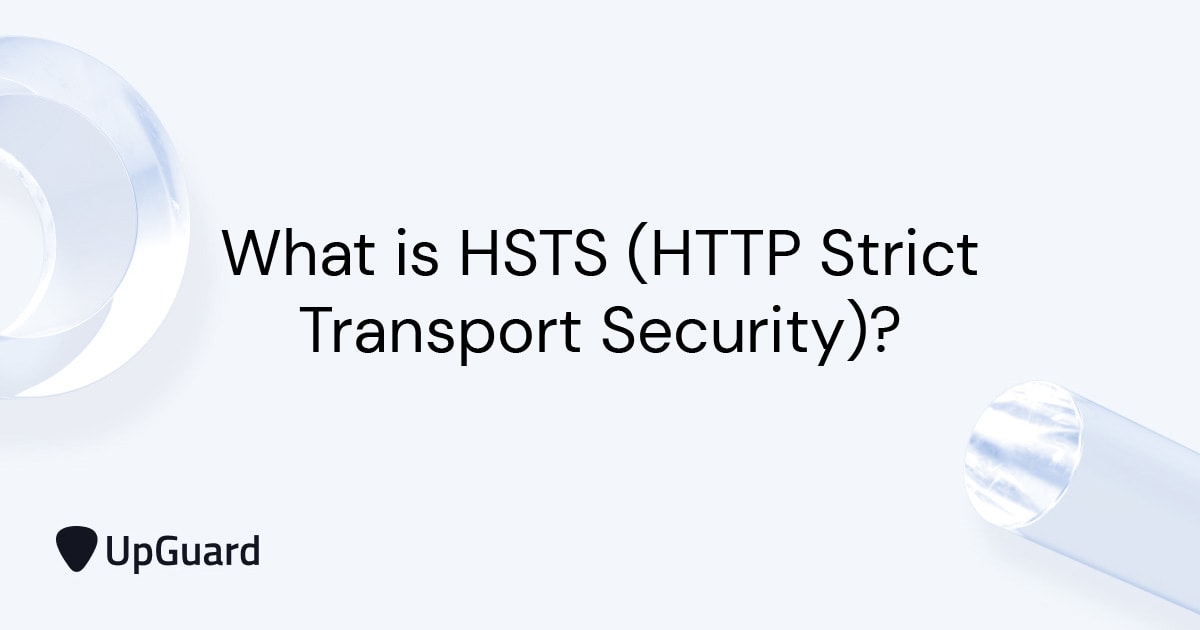Explore web search results related to this domain and discover relevant information.
Protocol Downgrade Attacks: Attackers can exploit the absence of HSTS to downgrade the secure HTTPS connection to an insecure HTTP connection. This can lead to the exposure of sensitive information, such as login credentials or session cookies.
Session Hijacking: Without HSTS, session cookies transmitted over insecure connections are vulnerable to interception. Attackers can steal these cookies and impersonate the user, gaining unauthorized access to their accounts. Loss of User Trust: Failing to enforce secure connections can erode user trust in your website. Users may be hesitant to provide sensitive information or engage in transactions if they perceive the site as insecure.To fix the “Strict-Transport-Security Header Not Set” vulnerability, you need to configure your web server to include the HTTP Strict Transport Security (HSTS) header in its responses.This example sets the HSTS header with a maximum age of one year (31536000 seconds) and includes all subdomains.HTTP Strict Transport Security (HSTS) is a web security policy mechanism that ensures secure communication between a web server and user agents. It is an IETF standards track protocol specified in RFC 6797.

Also, when using hosts serving ... need to be redirected, and you may end up not testing your site. Therefore, HSTS may work with the domain name but not with IP address. For more information on how to implement a scan for PCI DSS, and how to handle vulnerabilities such as ...
Also, when using hosts serving virtual site, where multiple domains share the same IP address, the system will not know to which server the request need to be redirected, and you may end up not testing your site. Therefore, HSTS may work with the domain name but not with IP address. For more information on how to implement a scan for PCI DSS, and how to handle vulnerabilities such as lack of HSTS,Definition:HSTS (HTTP Strict Transport Security) is a web security policy mechanism that helps websites enforce secure connections by requiring browsers to only interact with them over HTTPS, preventing insecure HTTP connections.Explanation:HSTS protects users from certain types of attacks, such as man-in-the-middle (MITM) attacks and SSL stripping, which attempt to downgrade HTTPS connections to unencrypted HTTP.The best practice is to use a FQDN for scans, and not an IP address. In many cases, load balancers, WAF or other infrastructure elements will not serve IP address and will return an error page (eg. 404) with minimal headers, specifically without HSTS.Once a website enables HSTS, the browser automatically upgrades all future requests to HTTPS, even if the user mistakenly types "http://" instead of "https://".

Introduced in 1976, the HST125 trains became a national favourite, beloved for their speed, air-conditioned comfort, and mechanical reliability.
After nearly 50 years, the HSTs were replaced by the bi-mode, diesel, and electric-powered Inter-City Express Trains.
The HTTP Strict-Transport-Security response header (often abbreviated as HSTS) informs browsers that the host should only be accessed using HTTPS, and that any future attempts to access it using HTTP should automatically be upgraded to HTTPS. Additionally, on future connections to the host, ...
The HTTP Strict-Transport-Security response header (often abbreviated as HSTS) informs browsers that the host should only be accessed using HTTPS, and that any future attempts to access it using HTTP should automatically be upgraded to HTTPS. Additionally, on future connections to the host, the browser will not allow the user to bypass secure connection errors, such as an invalid certificate.If this directive is specified, the HSTS policy applies to all subdomains of the host's domain as well. ... See Preloading Strict Transport Security for details. When using preload, the max-age directive must be at least 31536000 (1 year), and the includeSubDomains directive must be present. The Strict-Transport-Security header informs the browser that all connections to the host must use HTTPS.By following the guidelines and successfully submitting your domain, you can ensure that browsers will connect to your domain only via secure connections. While the service is hosted by Google, all browsers are using this preload list. However, it is not part of the HSTS specification and should not be treated as official. Information regarding the HSTS preload list in Chrome: https://www.chromium.org/hsts/Before loading an http URL, the browser checks the domain name against its HSTS hosts list. If the domain name is a case insensitive match for an HSTS host or is a subdomain of one that specified includeSubDomains, then the browser replaces the URL scheme with https.

Data can be just as valuable as ... not enough as people will still find a way to reach your website over http://. HSTS forces browsers and app connections to use HTTPS if that is available....
By having a Strict-Transport-Security header installed, it will be nearly impossible for the bad guys to glean any information at all! Not even your Yoga schedule! · $ curl --head https://www.facebook.com HTTP/1.1 200 OK Strict-Transport-Security: max-age=15552000; preload · The multi-billion-dollar company, Google formally rolled out a HSTS security policy on July 29, 2016.In the course of my research for NGIX settings, I discovered a government website giving out incorrect information and provided the necessary code change that forces HSTS no matter what the HTTP response code returns.Guest blogger, Denver Prophit Jr, gives a quick start guide to HSTS. What is HSTS and HSTS preloading, how do you use it and how to implement it on various servers.Data can be just as valuable as physical items in your shop or house, so it’s just as important to keep them locked up and secure. Padlocking your website is sometimes not enough as people will still find a way to reach your website over http://. HSTS forces browsers and app connections to use HTTPS if that is available.


Boost WordPress security with our step-by-step HSTS guide. Learn manual and plugin methods, best practices, and troubleshooting tips to protect your site from attacks.
Each method for implementing HSTS has its own strengths depending on your technical needs and site setup. Before you flip the switch, double-check that SSL is enabled with a valid certificate and that every piece of content loads over HTTPS.If you’re reading this, you’re serious about tightening up your WordPress site’s security with HTTP Strict Transport Security (HSTS) – and that’s a smart move.HSTS forces browsers to only connect via HTTPS, preventing downgrade attacks on your visitors.In this guide, you’ll get step-by-step instructions for multiple proven methods of setting up HSTS on WordPress: manual configuration, the plugin route, and Cloudflare’s automatic handling.
The HSTS header is name "Strict-Transport-Security and also specifies a period of time during which the user agent should only access the service via HTTPS requests. This means the first time a site is accessed using HTTPS it returns the Strict-Transport-Security header, the browser records ...
The HSTS header is name "Strict-Transport-Security and also specifies a period of time during which the user agent should only access the service via HTTPS requests. This means the first time a site is accessed using HTTPS it returns the Strict-Transport-Security header, the browser records this information, so future attempts to load the site using HTTP automatically use HTTPS.However, whenever the Strict-Transport-Security header is delivered to the user agent, it will update the expiration time for that site, so sites can refresh this information and prevent the timeout from expiring. Should it be necessary to disable HSTS, web servers can set the max-age to 0 (over a HTTPS connection) to immediately expire the HSTS header, allowing access via HTTP requests.Unfortunately, the access point they are using is actually an attacker's laptop and they're intercepting the original HTTP request and redirecting your employee to a clone of your payroll system instead of the real thing, exposing your employees' personally identifiable information (PII). If your payroll system uses HSTS and your employee has visited it once using HTTPS, then their browser will know to only use HTTPS, preventing this type of man-in-the-middle attack.This is a complete overview of the HTTP Strict Transport Security. Learn about what HSTS is and why it is important in this in-depth post.


HTTP Strict Transport Security (HSTS) is a web server directive that informs user agents and web browsers how to handle its connection through a response header sent at the very beginning and back to the browser.
By having a Strict-Transport-Security header installed, it will be nearly impossible for the bad guys to glean any information at all! Not even your Yoga schedule! · $ curl --head https://www.facebook.com HTTP/1.1 200 OK Strict-Transport-Security: max-age=15552000; preload · The multi-billion-dollar company, Google formally rolled out a HSTS security policy on July 29, 2016.In the course of my research for NGIX settings, I discovered a government website giving out incorrect information and provided the necessary code change that forces HSTS no matter what the HTTP response code returns.Guest blogger, Denver Prophit Jr, gives a quick start guide to HSTS. What is HSTS and HSTS preloading, how do you use it and how to implement it on various servers.Data can be just as valuable as physical items in your shop or house, so it’s just as important to keep them locked up and secure. Padlocking your website is sometimes not enough as people will still find a way to reach your website over http://. HSTS forces browsers and app connections to use HTTPS if that is available.
HTTP Strict Transport Security (HSTS) Policy Not Enabled is a vulnerability similar to Remote Code Execution and DoS in HTTP.sys (IIS) and is reported with medium-level severity. It is categorized as WASC-4, ISO27001-A.14.1.2, CWE-523, CVSS:3.0/AV:N/AC:H/PR:N/UI:N/S:U/C:H/I:H/A:L, OWASP 2013-A6, ...
Why Websites Need HTTP Strict Transport Security (HSTS) Content-Type and Status Code Leakage · Why Framework Choice Matters in Web Application Security · The Importance of the Content-Type Header in HTTP Requests · Vulnerability Index · You can search and find all vulnerabilities · Select Category · Critical · High · Medium · Low · Best Practice · Information ·HTTP Strict Transport Security (HSTS) Policy Not Enabled is a vulnerability similar to Remote Code Execution and DoS in HTTP.sys (IIS) and is reported with medium-level severity. It is categorized as WASC-4, ISO27001-A.14.1.2, CWE-523, CVSS:3.0/AV:N/AC:H/PR:N/UI:N/S:U/C:H/I:H/A:L, OWASP 2013-A6, OWASP 2017-A3, CAPEC-217.This is the list of security issues and vulnerability checks that the Invicti web application security scanner has. Therefore when you scan a website, web application or web API (web service) with Invicti, it can be checked for all these type of issues.HTTP Strict Transport Security (HSTS) is a web security policy mechanism whereby a web server declares that complying user agents (such as a web browser) are to interact with it using only secure (HTTPS) connections. The HSTS Policy is communicated by the server to the user agent via a HTTP response header field named "Strict-Transport-Security".
Access to this page requires authorization. You can try changing directories. ... HTTP Strict Transport Security (HSTS) is a widely supported standard that helps protect website visitors by ensuring that their browser always connects using an HTTPS connection.
Download Microsoft Edge More info about Internet Explorer and Microsoft Edge ... Access to this page requires authorization. You can try signing in or changing directories. Access to this page requires authorization. You can try changing directories. ... HTTP Strict Transport Security (HSTS) is a widely supported standard that helps protect website visitors by ensuring that their browser always connects using an HTTPS connection.The webserver (or in our case, your Exchange server) must also send the preload directive as part of the Strict-Transport-Security header to signal that HSTS preloading should be performed by the browser. By default, Exchange Server doesn't redirect HTTP to HTTPS traffic, as the Default Web Site requires SSL. See Default settings for Exchange virtual directories for more information.The HSTS specification allows you to send the max-age directive with a value of 0. This configuration can be used to overwrite the browsers cached HSTS policy information.Finally, the following commands must be run to complete the HSTS configuration: Stop-IISCommitDelay Remove-Module IISAdministration · Do the following steps in the Internet Information Services Manager to configure and enable HSTS:

The primary goal of creating this standard was to help avoid man-in-the-middle (MITM) attacks that use SSL stripping. SSL stripping is a technique where an attacker forces the browser to connect to a site using HTTP so that they can sniff packets and intercept or modify sensitive information. HSTS ...
The primary goal of creating this standard was to help avoid man-in-the-middle (MITM) attacks that use SSL stripping. SSL stripping is a technique where an attacker forces the browser to connect to a site using HTTP so that they can sniff packets and intercept or modify sensitive information. HSTS is also a good method to protect yourself from cookie hijacking.HSTS lets you avoid man-in-the-middle (MITM) attacks that use SSL stripping. SSL stripping is a technique where an attacker forces the browser to connect to a site using HTTP so that they can sniff packets and intercept or modify sensitive information.There are many different methods to remove HSTS information from Firefox for a given domain. All of them are described in detail in a dedicated article.The following is the simplest and fastest one, but it removes more than HSTS information from the cache.


Before enabling HSTS, review the requirements. ... For more background information on HSTS, see the introductory blog post ↗.
HSTS protects HTTPS web servers from downgrade attacks. These attacks redirect web browsers from an HTTPS web server to an attacker-controlled server, allowing bad actors to compromise user data and cookies.If you remove HTTPS before disabling HSTS or before waiting for the duration of the original Max Age Header specified in your Cloudflare HSTS configuration, your website becomes inaccessible to visitors for the duration of the Max Age Header or until you enable HTTPS.For HTTP Strict Transport Security (HSTS), select Enable HSTS.Configure the HSTS settings.
HSTS addresses this problem by informing the browser that connections to the site should always use TLS/SSL. The HSTS header can be stripped by the attacker if this is the user's first visit. Google Chrome, Mozilla Firefox, Internet Explorer, and Microsoft Edge attempt to limit this problem ...
HSTS addresses this problem by informing the browser that connections to the site should always use TLS/SSL. The HSTS header can be stripped by the attacker if this is the user's first visit. Google Chrome, Mozilla Firefox, Internet Explorer, and Microsoft Edge attempt to limit this problem by including a "pre-loaded" list of HSTS sites.It allows web servers to declare that web browsers (or other complying user agents) should automatically interact with it using only HTTPS connections, which provide Transport Layer Security (TLS/SSL), unlike the insecure HTTP used alone. HSTS is an IETF standards track protocol and is specified in RFC 6797.The HSTS Policy is communicated by the server to the user agent via an HTTP response header field named Strict-Transport-Security. HSTS Policy specifies a period of time during which the user agent should only access the server in a secure fashion. Websites using HSTS often do not accept clear text HTTP, either by rejecting connections over HTTP or systematically redirecting users to HTTPS (though this is not required by the specification).The HSTS specification was published as RFC 6797 on 19 November 2012 after being approved on 2 October 2012 by the IESG for publication as a Proposed Standard RFC. The authors originally submitted it as an Internet Draft on 17 June 2010.With the conversion to an Internet Draft, the specification name was altered from "Strict Transport Security" (STS) to "HTTP Strict Transport Security", because the specification applies only to HTTP. The HTTP response header field defined in the HSTS specification however remains named "Strict-Transport-Security".
Following is an example of a Strict-Transport-Security header that returns from an HSTS-enabled website. Strict-Transport-Security: max-age = 31536000; includeSubDomains · This header information instructs the browser that all subdomains will be HTTPS for one year, blocking subdomains that ...
Following is an example of a Strict-Transport-Security header that returns from an HSTS-enabled website. Strict-Transport-Security: max-age = 31536000; includeSubDomains · This header information instructs the browser that all subdomains will be HTTPS for one year, blocking subdomains that only support HTTP.The browser then stores this information for the duration mentioned in the header. When the browser attempts to access that domain in the future, it automatically converts any attempt to access the website via HTTP to HTTPS. This conversion occurs even if the user clicks on an HTTP link within the website or manually types a subdomain without including the protocol part. In the case of our example HSTS-enabled website, if a subdomain such as “http://test-sub.com” is encountered, the browser will automatically change it to "https://test-sub.com".By enforcing HTTPS, HSTS guarantees a secure connection for users — a great first step in web app security. It also stops attackers from interfering with or stealing sensitive information like user data stored in session cookies.Such information can persist even in browser privacy modes and be utilized to identify visitors when they request different domains. Ineffective for DNS-based attacks. Attackers can use DNS spoofing techniques that will use misleading domain names or artificial domains not on the HSTS Preload list to carry out DNS-based attacks.


Discover HTTP Strict Transport Security (HSTS), its benefits for your website security, and how to implement it to protect your users.
Have you ever worried about your website visitors’ data falling into the wrong hands? HTTP Strict Transport Security (HSTS) is here to ease those fears. It ensures browsers always default to secure HTTPS connections, significantly reducing your site’s vulnerability to cyber threats.Before HSTS, even if a site had HTTPS enabled, user agents (web browsers) might initially attempt to connect via unsecured HTTP, creating vulnerabilities. Attackers could exploit these moments to intercept traffic, redirect users to malicious sites, or steal sensitive data.Regulatory Compliance: Businesses handling sensitive data must comply with stringent regulations like PCI DSS, GDPR, and HIPAA. Implementing HSTS is critical in meeting these requirements by enforcing secure communication standards and preventing potential data breaches.In this article, you’ll discover exactly how HSTS works, its significant benefits, and practical steps to implement it effectively.
HTTP Strict Transport Security (also named HSTS) is an opt-in security enhancement that is specified by a web application through the use of a special response header. Once a supported browser receives this header that browser will prevent any communications from being sent over HTTP to the ...
HTTP Strict Transport Security (also named HSTS) is an opt-in security enhancement that is specified by a web application through the use of a special response header. Once a supported browser receives this header that browser will prevent any communications from being sent over HTTP to the specified domain and will instead send all communications over HTTPS.Cookies can be manipulated from sub-domains, so omitting the includeSubDomains option permits a broad range of cookie-related attacks that HSTS would otherwise prevent by requiring a valid certificate for a subdomain.The specification has been released and published end of 2012 as RFC 6797 (HTTP Strict Transport Security (HSTS)) by the IETF.If the site owner would like their domain to be included in the HSTS preload list maintained by Chrome (and used by Firefox and Safari), then use the header below.
On Apache, you would apply a Header directive to always set the HSTS header, like so: Header always set Strict-Transport-Security "max-age=31536000; includeSubDomains; preload" On Microsoft systems running IIS (Internet Information Services), there are no “.htaccess” files to implement ...
On Apache, you would apply a Header directive to always set the HSTS header, like so: Header always set Strict-Transport-Security "max-age=31536000; includeSubDomains; preload" On Microsoft systems running IIS (Internet Information Services), there are no “.htaccess” files to implement custom headers.Resources, best practices, and case studies for deploying HTTPS in the federal government.HTTP Strict Transport Security (HSTS) is a simple and widely supported standard to protect visitors by ensuring that their browsers always connect to a website over HTTPS.HSTS exists to remove the need for the common, insecure practice of redirecting users from http:// to https:// URLs.

It’s important to clarify that there’s no separate HSTS certificate involved. While the term is sometimes used informally, HSTS is not a certificate or file, it’s a policy embedded in the HTTPS response.
Understand HSTS vs HTTPS and how HTTP Strict Transport Security helps browsers enforce secure access. Learn how to enable HSTS with preload support.Once HSTS is properly set up, the browser takes care of enforcing HTTPS on its own. Even if a user clicks an old HTTP link or types your URL without the “https,” their browser will automatically switch to a secure connection.To eliminate that risk, you need HSTS, short for HTTP Strict Transport Security.This blog will break down the difference between HSTS vs HTTPS and how they complement each other.
Projects that support or advise about HSTS and HSTS preloading should ensure that site operators understand the long-term consequences of preloading before they turn it on for a given domain. They should also be informed that they need to meet additional requirements and submit their site to ...
Projects that support or advise about HSTS and HSTS preloading should ensure that site operators understand the long-term consequences of preloading before they turn it on for a given domain. They should also be informed that they need to meet additional requirements and submit their site to hstspreload.org to ensure that it is successfully preloaded (i.e.Browsing history leaks: If a user clicks on an HTTP link to a site, an on-path network observer can see that URL. If the site has an HSTS policy that is enforced, the browser upgrades that URL to HTTPS and the path is not visible to the network observer.Since sites tell the browser that they support HSTS when the browser visits, the browser cannot know a site's HSTS policy before the user has visited the site for the first time. As a result, the browser can not require HTTPS until after the first time it has connected to the site, possibly leaving the user unprotected.To account for this first-load problem, Chrome maintains a list of domains that have a strong HSTS policy and are HTTPS only. This HSTS preload list is built into Chrome. Requests to these domains will only be made over HTTPS; any HTTP requests will be upgraded to HTTPS and fail to connect if HTTPS is unavailable.

HSTS mitigates this by forcing secure connections from the browser level. MITM Attacks – An attacker can intercept and alter data transferred between the browser and the server. Cookie Hijacking – Session cookies transferred over HTTP can be captured and reused maliciously. Data Leakage – Sensitive information ...
HSTS mitigates this by forcing secure connections from the browser level. MITM Attacks – An attacker can intercept and alter data transferred between the browser and the server. Cookie Hijacking – Session cookies transferred over HTTP can be captured and reused maliciously. Data Leakage – Sensitive information (passwords, personal info) may be sent in plaintext.When it comes to website security, just having HTTPS in your URL bar isn’t enough anymore. These... Tagged with cybersecurity, sslerror, hsts, https.These days, it’s the baseline, not the finish line. Installing an SSL certificate is a solid first step, but if you've come across the warning "HSTS Missing from HTTPS Server", it means there's still a gap in your defenses that hackers could take advantage of.If you're seeing that error, it means your server isn’t sending a specific HTTP response header called Strict-Transport-Security. This header is what activates HTTP Strict Transport Security, or HSTS for short.





